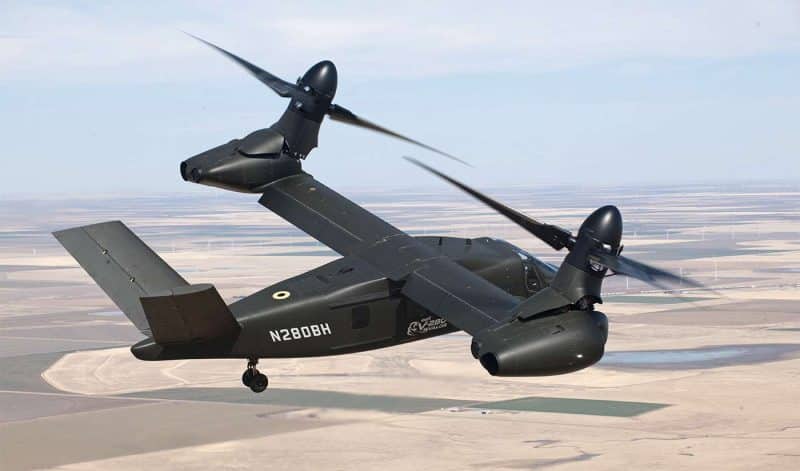Increasing tactical transport capacity by 50%, while going twice as fast and twice as far as a UH-60 Black-Hawk helicopter, such is the more than ambitious specifications of the Futur Long Range Assault Aircraft program, or FLRAA, one of the pillars of the Futur Vertical Lift program aimed at replacing, from the second half of the current decade, no less than 4000 rotary wings in service within the US Army, ranging from the OH-58 Kiowa reconnaissance ( retired from service in 2014) to the CH-47 Chinook heavy helicopter, to the AH-64 Apache attack helicopter and the UH-60 Black Hawk utility helicopter. The FLRAA program is the first to open the ball, with the announcement made yesterday by the US Army of the choice of the V-280 Valor presented by Bell and Textron, and to the detriment of the SB1 Defiant presented by Sikorsky and Boeing.
As you might expect, the V280 is a device of superlatives. If its 15-meter long cell is close to that of the Black Hawk, the new device has no relation to its predecessor, thanks in particular to its two tilting rotors 10,7 meters in diameter powered by two AE 1107F turboprops each delivering 5000 resume. Thus adorned, the Valor reaches a cruising speed of 280 knots, or 520 km, and can transport 14 armed soldiers 1000 km away, before returning to its base. The combination of reach and speed of the V-280 is at the heart of the US Army's vision for air combat in the years to come, to be able to operate near airspace contested by the opposing air defense.

The choice of the V-280 over the Defiant is, in itself, hardly a surprise. Indeed, during the prototype design and evaluation phases, the Bell device was regularly much more advanced than its competitor, which encountered numerous technical difficulties causing additional development delays. Thus, while the two orders were served simultaneously in 2013, the V-280 made its first flight on December 17, 2017, where the SB1 Defiant did not take off for the first time until March 21, 2019, 14 months later, even though the Valor had already completed most of its test flights, and had already reached the speed of 520 km / h in January 2019. What's more, while the Valor logged more than 160 flight hours in the first year of its tests, the Defiant leveled off, over the same duration, below the bar of 40 hours of flight.

The rest of this article is for subscribers only
The Classic subscriptions provide access to
all articles without advertising, starting at € 1,99.
Newsletter subscription
Register for the Meta-Defense Newsletter to receive the
latest fashion articles daily or weekly


[…] […]
[…] to acquire Black Hawks when the US Army will begin in the second half of the decade to replace them with the tiltrotor V-280 Valor, offering performances, particularly in terms of speed and range, that are much more […]